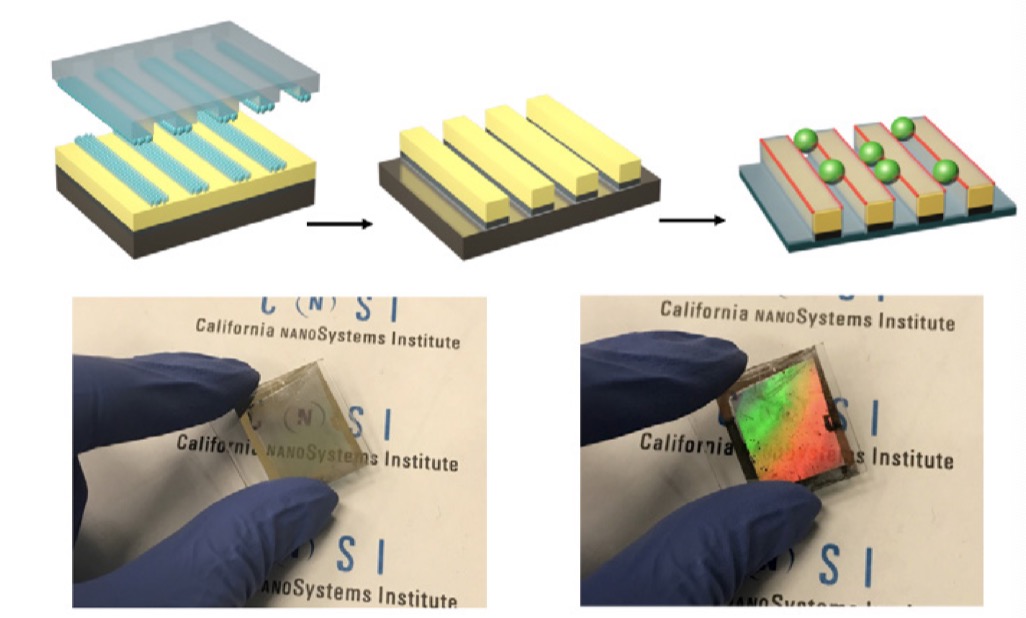Scalable Fabrication of Quasi-One-Dimentional Au Nanoribbons for Plasmonic Sensing, C. Zhao, X. Xu, A.R. Ferhan, N. Chiang, J.A. Jackman, Q.Yang, W. Liu, A. M. Andrews*, N. J. Cho*, and P. S. Weiss*, Nano Letters, Just Accepted Manuscript, DOI: 10.1021/acs.nanolett.9b04963
Abstract: Plasmonic nanostructures have applications in a wide range of fields, including chemical and biological sensing. However, the development of techniques to fabricate sub-micron plasmonic structures over large scales remains challenging. We demonstrate a high-throughput, cost-effective approach to fabricate Au nanoribbons via chemical lift-off lithography (CLL). Commercial HD-DVDs were used as large-area templates for CLL. Transparent glass slides were coated with Au/Ti films and functionalized with self-assembled alkanethiolate monolayers. Monolayers were patterned with lines via CLL. The lifted-off, exposed regions of underlying Au were selectively etched into large-area grating-like patterns (200-nm linewidth; 400-nm pitch; 60 nm height). After removal of the remaining monolayers, a thin In2O3 layer was deposited and the resulting gratings were used as plasmonic sensors. Distinct features in the extinction spectra varied in their responses to refractive index changes in the solution environment with a maximum bulk sensitivity of ~510 nm/refractive index unit. High surface sensitivity to local refractive index changes in the near-field was also achieved, as evidenced by real-time tracking of lipid vesicle or protein adsorption. These findings show how CLL provides a simple and economical means to pattern large-area plasmonic nanostructures for applications in optoelectronics and sensing.
